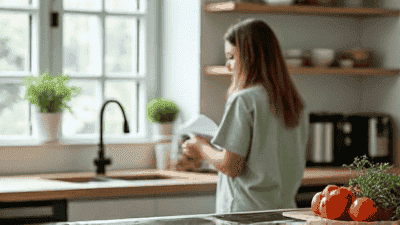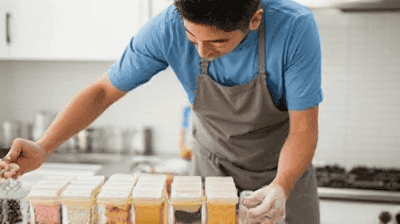The Ultimate Guide to Sanitizing Cutting Boards and Countertops
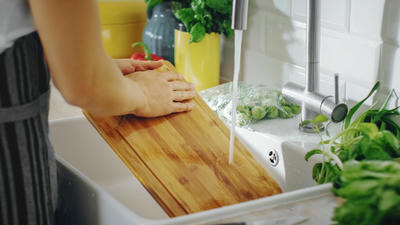
The kitchen is often considered the heart of the home. It is where meals are prepared, families gather, and memories are created. However, it is also one of the areas most susceptible to bacteria and germs, especially on cutting boards and countertops. Proper sanitation of these surfaces is crucial for food safety and overall health.
Understanding the Importance of Sanitizing Cutting Boards and Countertops
Why Sanitize?
Every time you prepare food, especially raw meat, poultry, or seafood, your cutting boards and countertops come into contact with bacteria, such as Salmonella and E. coli. If not properly sanitized, these harmful microorganisms can cause foodborne illnesses that pose serious health risks. By regularly sanitizing your kitchen surfaces, you can reduce the presence of these pathogens, ensuring the safety of your food and the health of your family.
Impacts of Bacteria in the Kitchen
Foodborne Illness: Consuming contaminated food can lead to symptoms ranging from stomach cramps and diarrhea to severe cases requiring hospitalization.
Cross-Contamination: Bacteria can easily spread from one surface to another, increasing the risk of contamination if cutting boards and countertops are not sanitized correctly.
Long-Term Health Risks: Repeated exposure to foodborne pathogens can lead to chronic health issues, particularly in vulnerable populations like children, the elderly, and those with weakened immune systems.
Benefits of Sanitizing
Enhanced Food Safety: Regular sanitation minimizes the risk of foodborne illnesses.
Improved Cleanliness: Sanitized surfaces look and feel cleaner, creating a more pleasant cooking environment.
Increased Longevity of Surfaces: Proper care and sanitation can extend the life of cutting boards and countertops, preserving their appearance and functionality.
Types of Cutting Boards and Countertops
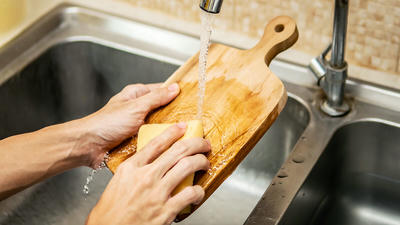
Before we dive into the sanitation process, it’s essential to understand the different types of cutting boards and countertops, as each material may require specific cleaning methods.
Cutting Boards
Wooden Cutting Boards: Known for their aesthetic appeal and knife-friendliness, wooden boards are popular in many kitchens. However, they can absorb moisture and odors, necessitating effective sanitization methods.
Plastic Cutting Boards: Often dishwasher-safe, plastic cutting boards are easy to clean but may develop deep grooves over time, which can harbor bacteria.
Bamboo Cutting Boards: A sustainable option, bamboo boards are durable and less porous than traditional wood, but they still require proper care to maintain hygiene.
Glass and Marble Cutting Boards: These non-porous surfaces are easy to sanitize but can dull knives. They are often used for specific tasks, such as rolling dough.
Countertops
Granite and Natural Stone: Durable and beautiful, stone countertops require special cleaners to avoid damage and staining.
Laminate: Affordable and versatile, laminate counters are easy to clean but can scratch, requiring gentle treatment.
Stainless Steel: Common in commercial kitchens, stainless steel is non-porous but requires specific sanitizing methods to avoid water spots and maintain its shine.
Quartz: Engineered stone that is stain-resistant and non-porous, quartz countertops are easy to maintain but still need regular sanitization to prevent bacteria buildup.
Step-by-Step Guide to Sanitizing Cutting Boards and Countertops
Now that we understand the importance of sanitization and the materials involved, let’s explore the step-by-step process for effectively sanitizing your cutting boards and countertops.
Step 1: Gather Your Supplies
Before you begin, ensure you have all the necessary supplies on hand. Here’s a checklist of items you might need:
For Cutting Boards
- Dish soap
- Baking soda
- White vinegar or hydrogen peroxide
- A soft sponge or cloth
- A scrub brush (for deeply stained boards)
- Food-safe mineral oil (for wooden boards)
For Countertops
- Mild dish soap
- All-purpose cleaner or specialized countertop cleaner
- White vinegar
- A non-abrasive scrubbing pad
- Microfiber cloth
Step 2: Clean the Surfaces
Cleaning Cutting Boards
Scrape Off Residue: Use a spatula or scraper to remove any food particles from the cutting board's surface.
Wash with Soap: Apply dish soap to the board and scrub with a sponge or cloth, paying special attention to crevices and deep grooves.
Rinse Thoroughly: Rinse the board under hot running water to remove all soap and food particles.
Cleaning Countertops
Remove Loose Debris: Wipe the countertop with a cloth or paper towel to pick up crumbs and debris.
Apply Soap Solution: Mix mild dish soap with warm water, then apply it to the countertop using a soft sponge.
Scrub the Surface: Gently scrub the countertop to remove stains and any residue. For stubborn stains, use a non-abrasive scrub pad.
Rinse with Water: Use a clean cloth dampened with warm water to wipe away soapy residue from the countertop.
Step 3: Disinfecting the Surfaces
After cleaning, it’s crucial to disinfect the surfaces to kill any remaining bacteria.
Disinfecting Cutting Boards
Choose Your Disinfectant: You can use either a solution of 1 tablespoon of bleach mixed with 1 gallon of water or 3% hydrogen peroxide.
Apply the Disinfectant: Pour or spray the solution over the cutting board, ensuring full coverage.
Let It Sit: Allow the disinfectant to sit on the board for at least 5 minutes. This contact time is essential for effective disinfection.
Rinse Again: Rinse the cutting board thoroughly under hot water to remove the disinfectant.
Disinfecting Countertops
Select Your Cleaner: For most countertops, a mix of 1 part white vinegar and 4 parts water or an all-purpose cleaner is effective.
Spray the Surface: Generously spray the cleaner over the countertop, ensuring even coverage.
Let It Sit: Allow the cleaner to sit for 5-10 minutes, particularly for vinegar, to disinfect effectively.
Wipe with a Cloth: Use a clean microfiber cloth to wipe down the countertop, removing the disinfectant along with any lingering bacteria.
Step 4: Dry the Surfaces
After cleaning and disinfecting, it’s critical to dry the surfaces to prevent any moisture buildup that can lead to bacterial growth.
Use a Clean Cloth: Choose a dry microfiber cloth or paper towel to wipe down both the cutting boards and countertops.
Ensure Full Drying: Make sure to dry all edges and corners where moisture may pool.
Step 5: Condition (For Wooden Boards)
If you have wooden cutting boards, it’s essential to condition them after deep cleaning. This helps to maintain their integrity and prevent cracking.
Apply Food-Safe Mineral Oil: Use a clean cloth to apply a thin layer of food-safe mineral oil to the board’s surface.
Rub It In: Ensure you rub the oil into the wood thoroughly, paying extra attention to any grooves or cracks.
Let It Absorb: Allow the oil to sit for a few hours or overnight for the best results before using the cutting board again.
Best Practices for General Maintenance
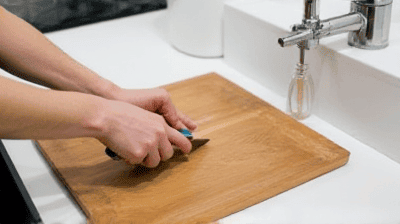
To keep your cutting boards and countertops clean and sanitized between deep cleanings, follow these best practices:
Cutting Boards
Separate Boards for Raw and Cooked Foods: Use distinct cutting boards for raw meats and separate ones for vegetables and cooked foods to avoid cross-contamination.
Wash Immediately After Use: Don’t let dirty boards sit for long periods; wash them right after use to prevent bacteria growth.
Avoid Submerging Wooden Boards: Do not soak wooden cutting boards, as prolonged exposure to water can cause warping and damage.
Use Safe Cleaning Products: Avoid harsh chemicals that can damage wooden surfaces or leave harmful residues.
Countertops
Daily Wipes: Wipe down countertops after each use to remove spills and prevent the buildup of bacteria.
Use Cutting Boards: Always use cutting boards when preparing food to protect your countertops from knife marks and scratches.
Spill Management: Clean up spills immediately to prevent staining and bacterial growth.
Use Appropriate Cleaners: Ensure any cleaning products are safe for the specific type of countertop you have.
Common Mistakes to Avoid
Here are some mistakes to avoid during the cleaning and sanitizing process:
Neglecting Contact Time: Failing to allow disinfectants enough time to sit can lead to ineffective sanitation. Always follow the recommended contact time for optimal results.
Improper Drying: Leaving surfaces wet can promote bacterial growth. Always dry your cutting boards and countertops thoroughly after cleaning.
Using Abrasive Cleaners: Abrasive scrubbers can scratch the surface of your cutting boards and countertops, making them more susceptible to bacteria. Choose non-abrasive options.
Ignoring Material Differences: Each material requires specific cleaning methods and products. Be sure to understand the requirements for wooden, plastic, and stone surfaces.
Lack of Routine Inspection: Regularly inspect your cutting boards and countertops for scratches or damage. Address these issues promptly to maintain hygiene.
Conclusion
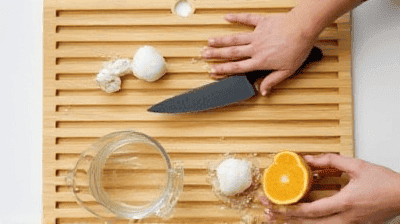
Sanitizing cutting boards and countertops is critical for ensuring food safety and maintaining a healthy kitchen environment. By following this ultimate guide and implementing regular cleaning practices, you can effectively eliminate harmful bacteria and keep your kitchen surfaces looking and feeling clean.
With just five easy steps—gathering your supplies, cleaning the surfaces, disinfecting, drying, and conditioning wooden boards—you can maintain a safe and sanitary space for food preparation. Remember to adopt best practices for general maintenance, avoid common mistakes, and regularly inspect your surfaces for the best results.
Investing time in proper sanitation not only protects your family's health but also enhances the overall appeal of your kitchen. Start implementing these practices today and enjoy the peace of mind that comes with a clean and safe cooking environment.

